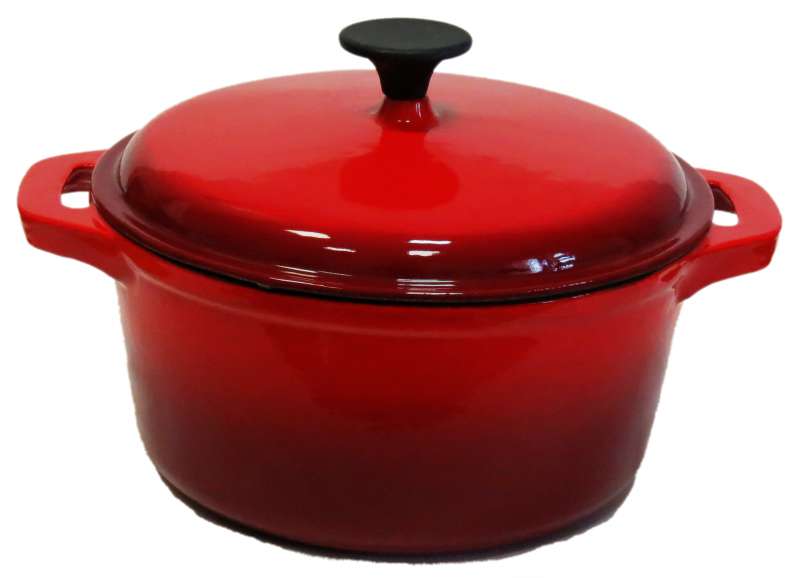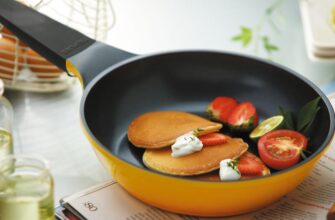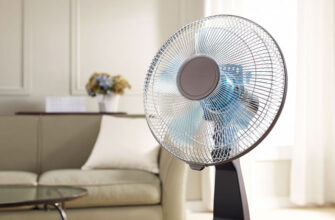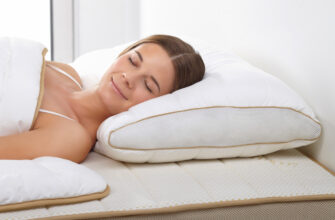The taste of a dish depends not only on the skill of the cook and the quality of the ingredients, but also on the dishes in which this dish is prepared. Therefore, when choosing a pan, it is important to take into account the type of material from which it is made, the thickness of the bottom and walls, the lid and handles, the type of non-stick coating and, of course, the manufacturer.
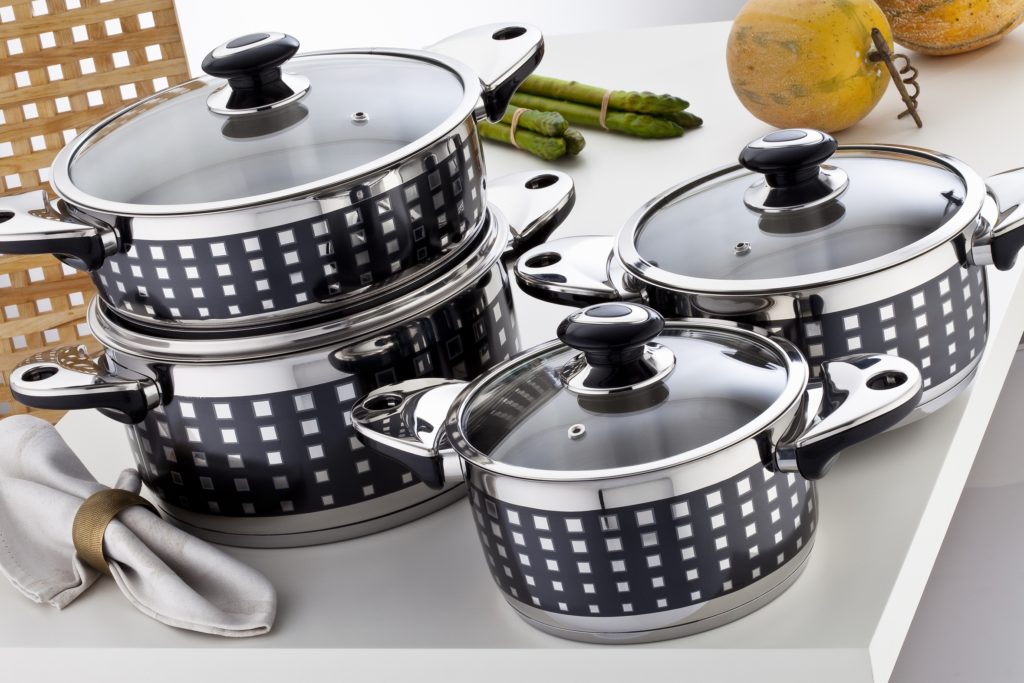
- Types of pots
- Stainless steel pans
- Advantages
- disadvantages
- Cast iron pans
- Advantages
- disadvantages
- Enamel pots
- Advantages
- disadvantages
- Heat-resistant glass pans
- Advantages
- disadvantages
- Aluminum pans
- Advantages
- disadvantages
- Ceramic pots
- Advantages
- disadvantages
- Copper pots
- Advantages
- disadvantages
- Dimensions and properties
- Lids
- Pens
- Non-stick coating
- Teflon coating
- Ceramic coating
- Titanium and marble coatings
- Top manufacturers
- How to clean a burnt aluminum pot
Types of pots
Stainless steel pans
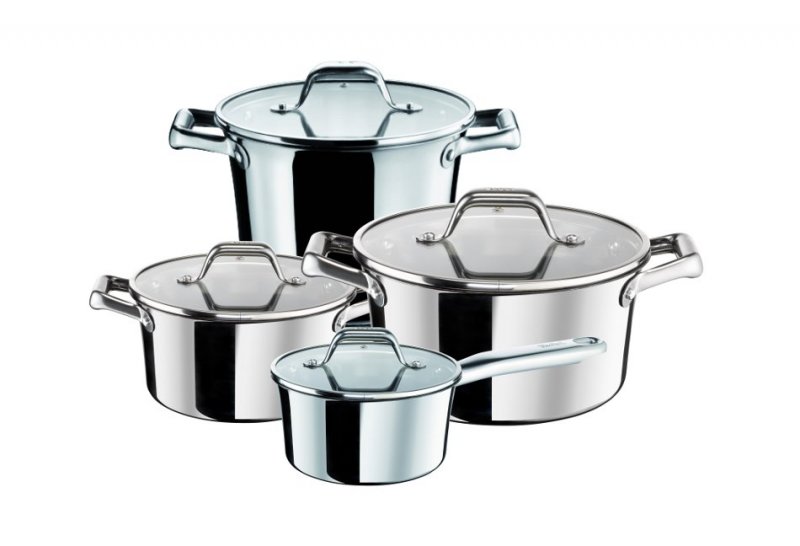
Stainless steel products are often used in professional kitchens. They do not rust and withstand well alkaline and acidic environments. Stainless steel pans do not chemically react with food, even if the food is stored for a long time.
When buying, pay attention to the bottom of the product. It is desirable that it be thick and multi-layered (encapsulated). Copper and aluminum layers can be used as an interlayer. Thanks to this, the container warms up more evenly, retains heat better, and food does not burn to it.
Advantages
-
Do not oxidize;
-
Long service life – tens of years;
-
They can store food;
-
Low maintenance, dishwasher safe;
-
Beautiful appearance;
-
Resistant to mechanical stress;
-
Suitable for all types of stoves, including induction;
-
Resistant to corrosion;
disadvantages
-
High price;
-
When overheating, spots and streaks appear on the walls of the product;
-
In pots with a thin bottom and walls, food is heated unevenly and often burns.
Cast iron pans
Cast iron products have low thermal conductivity, due to which they slowly and evenly heat up and cool down just as slowly. Therefore, they are often used for stewing and stewing food. In cast-iron pots, pilaf, stewed potatoes, cabbage and other dishes are excellent. In addition, cast iron cookware can be put in the oven and can also be used on all types of stoves.
Advantages
-
Reliability and resistance to mechanical stress;
-
Keeps warm for a long time;
-
Durability – cast iron cookware can 'work' for decades, retaining its original appearance and functionality;
disadvantages
-
Large weight (3–7 kg);
-
Tendency to corrosion – after washing, the product must be wiped dry and oiled. It is also recommended to ignite cast iron utensils with oil;
-
Not dishwasher safe;
-
Increased fragility – may crack if dropped;
-
High price (on average, 2,000–4,000 rubles);
Enamel pots
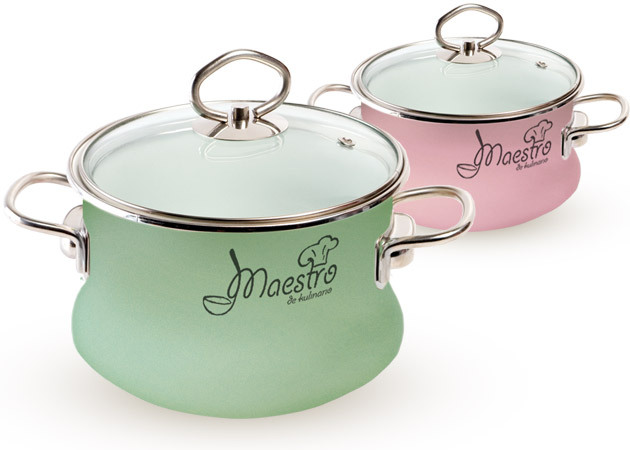
Enameled metal products have a beautiful appearance. They are great for storing food and making soups, cabbage soup, compote, jam or marinade. Such products withstand well the effects of acidic and alkaline environments.
Enamel protects metal from corrosion, and products from hazardous toxic substances that can migrate into metal products. But the enamel coating is not durable. It is quickly damaged, and chips form on the inside of the pan. In this case, the dishes must be thrown out, because its continued use can harm health.
Advantages
-
Low price, on average, 400–1,000 rubles. But cast-iron pots with an enamel coating are more expensive – about 3,000-6,000 rubles;
-
Resistant to corrosion;
-
They can store food for a long time;
disadvantages
-
Food often burns;
-
Fragility. The enamel is chipped off quickly, and after that the product cannot be used.
Heat-resistant glass pans

Glassware makes it easier to control cooking. Contrary to popular belief, they can withstand high temperatures and are great for gas and electric cooking. They can also be used in the oven and microwave.
Advantages
-
Food in glassware does not burn;
-
Glass has a very low thermal conductivity, so it cools slowly;
-
Does not emit substances hazardous to health upon contact with food;
-
You can store food in it;
-
Easy to clean;
disadvantages
-
Glass pans are afraid of temperature extremes. Therefore, they should not be placed on hot stoves or in overheated ovens. Also, you cannot wash hot dishes under cold water;
-
When cooking with gas, you must use a flame divider;
-
Glass products are characterized by increased fragility – they can break if dropped or hit;
Aluminum pans
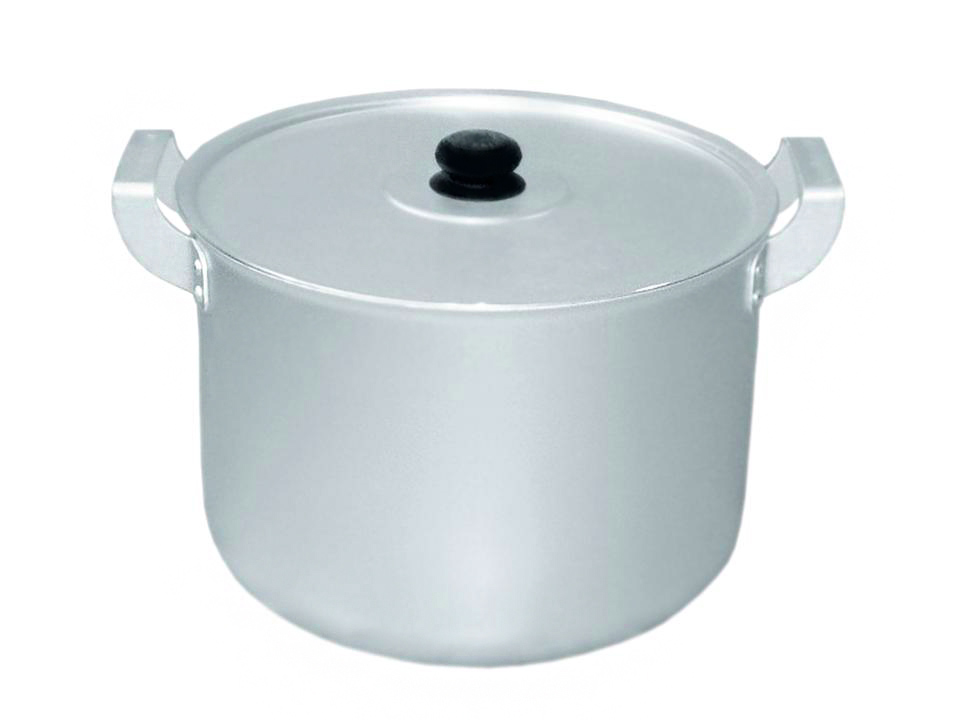
Aluminum cookware is characterized by high thermal conductivity and corrosion resistance. It is lightweight and inexpensive. On contact with oxygen, an oxide film forms on the aluminum surface, which protects food from the 'migration' of metal ions released during heating. However, this film breaks down when exposed to acids, salt and food storage. To minimize the negative effects of aluminum, pots often have an additional protective coating of another material.
Advantages
-
Little weight;
-
Does not rust;
-
Has a high coefficient of thermal conductivity, which means that the dish is prepared faster;
-
Affordable price;
disadvantages
-
Food cannot be stored in aluminum pans;
-
Pots made of extruded rather than cast aluminum, and products with thin walls and bottom, quickly deform and become unusable.
-
Food often burns to the aluminum surface;
-
Products without protective coating can be hazardous to health;
-
May change the taste and aroma of food;
Ceramic pots
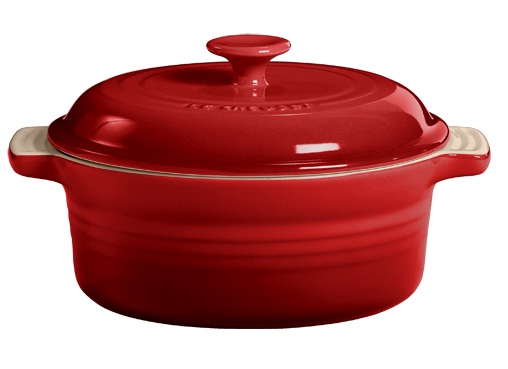
Ceramic cookware does not emit any hazardous substances into food and does not change the taste of food during storage, unlike aluminum. You can store ready-made meals in it and are not afraid that they will lose their original taste and aroma. It heats up for a long time and keeps the dish warm.
Advantages
-
Affordable price (600–1,500 rubles);
-
Ceramics are easy to clean (with a sponge and warm water);
-
Ideal for storing food. They preserve the original taste and aroma of the dish, as well as the beneficial substances that make up its composition;
-
Can be used in oven and microwave oven;
-
Ceramic pots are easy to clean;
disadvantages
-
Large weight;
-
Ceramic pots are afraid of temperature extremes;
-
Increased fragility – ceramic dishes are easy to break;
Copper pots
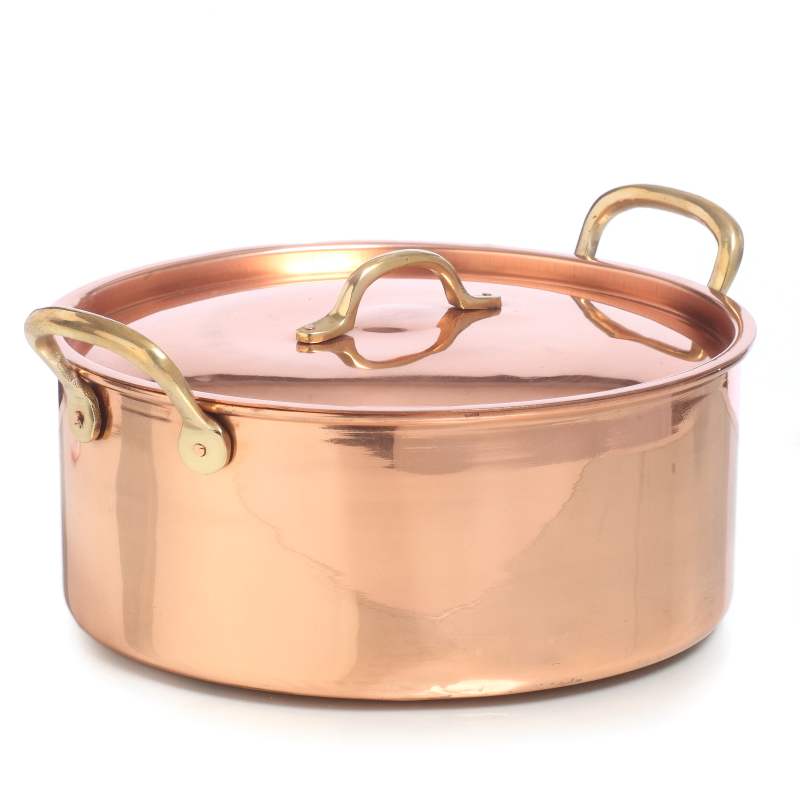
Copper pots are often used in professional kitchens. Since copper has a high coefficient of thermal conductivity, it heats up quickly, and this allows better control over the cooking process. However, when oxidized, copper changes the taste of food and releases substances hazardous to health into foods, therefore it is not recommended to cook acidic dishes in copper containers. To 'negate' these negative properties, manufacturers cover the inner surface of copper products with a special protective coating.
Advantages
-
Can be used in the oven;
-
Durability (with proper care);
-
Perfect for making jam and stewing meat dishes;
-
Improves control over cooking, which significantly improves their taste;
disadvantages
-
Copper products require special care – they should be rubbed with special cleaners and washed by hand. In this case, you must not use metal sponges, so as not to break the protective layer;
-
Sour foods, fruits and many vegetables cannot be cooked in copper pans without an inner protective coating;
-
If dropped or hit hard, the surface may deform;
Dimensions and properties
Most pots range in size from two to six liters, but small liters and large ten liters can be found. Two- and three-liter dishes are great for cooking stews, and four- and five-liter dishes are great for preparing first courses and side dishes for the whole family. The appropriate size of a pot for soup or borscht can be calculated by the number of family members (one liter per person).
The dishes with a volume of 0.5–2 liters are suitable for preparing porridge for children, boiling eggs and sauces.
When buying, you should also pay attention to the thickness of the bottom and walls. If the walls are very thin (less than 0.5 mm), the pan will heat up unevenly and deform quickly. The optimum thickness is 0.8 mm for stainless steel and aluminum cookware. The walls of cast iron and enamel pots should be five times thicker (more than 4.5 mm).
The bottom of the pan should be thick or multi-layered (especially in stainless steel). This makes the cookware more durable, ensures even heating of the product and prevents food from burning.
Lids
The lids preserve the flavor and aroma of the dish, keep the food dry and make cooking easier. For example, glass lids allow you to control the cooking process, and lids with a funnel (a small 'hole' in the center) allow you to pour liquid seasoning into a dish.
-
The pot lids can be equipped with a temperature sensor that shows how hot the dishes are and when to reduce the heat. Some temperature sensors sound an alarm when overheating or reaching a specified temperature. This makes the cooking process easier and helps to retain more nutrients in the food. The thermal sensor must be removed before washing in the dishwasher and oven.
-
When buying a glass cover, pay attention to the bezel material. It can be made of silicone and stainless steel. A lid with a silicone rim can be used in microwave ovens, unlike steel rims, but the latter provide better protection of the glass from mechanical damage and a better fit of the lid to the dishes.
-
It is desirable that the lid of the pot has a valve for relieving excess pressure and removing steam. Some products are equipped with an automatic valve that automatically 'regulates' the cooking process.
Pens
Pot handles can be made of the same material as the body of the product, as well as Bakelite (durable and heat-resistant plastic). The handles made from a single piece of metal together with the body get very hot, so be prepared to use an oven mitt while cooking. If they are spot welded, they heat up less intensely. Pots with metal handles can be used in the oven, unlike products with bakelite handles.
Bakelite handles do not heat up, do not slip and fit comfortably in the hand. They can withstand temperatures up to 180C, but when this value is exceeded, they carbonize and deform. These handles are often attached to the body of the cookware with bolts or rivets, but this method of attachment is considered less reliable than spot welding.
Non-stick coating
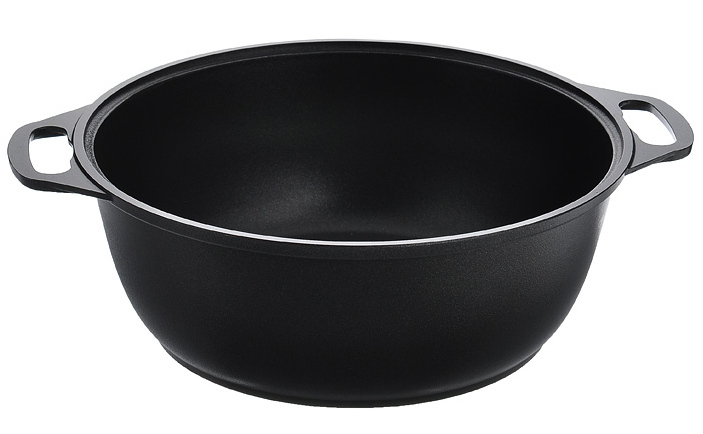
Products made from aluminum, cast iron and steel often have an internal non-stick coating. It prevents food from burning and metal oxidation.
Teflon coating
The non-stick Teflon coating is chemically neutral to acidic and alkaline environments. But it is quite difficult to take care of it – at the slightest damage, Teflon begins to emit into food substances hazardous to health associated with the development of cancer, diabetes and infertility. Therefore, pans with Teflon coating should not be washed with brushes or abrasive cleaning agents, nor should food be stirred with metal spatulas or cutlery.
The Teflon coating is also damaged by overheating. It can withstand temperatures no higher than 200-250 degrees, and when this value is exceeded, it cracks and releases harmful compounds.
In addition, Teflon-coated cookware is not very durable. The maximum she can live is 3-4 years. At the same time, after a year of the most 'quivering' use, Teflon begins to wear out.
Ceramic coating
Ceramic coating is much more reliable and safer than Teflon. Products with ceramics are great for cooking cereals, meat, boiling milk, etc. They are easy to clean under running warm water, and are not so afraid of metal objects as products with Teflon. But you shouldn't 'abuse' metal objects. It is recommended to use silicone and wood spatulas during cooking. Also, you must not expose the dishes to 'temperature shock' – a sharp change in temperature, otherwise the ceramics may crack and the pan will have to be thrown away.
Titanium and marble coatings
Some items are titanium or marble coated. Titanium coating (for example, TriTitan) is considered one of the most reliable and safe. It has good wear resistance, is not damaged when used while cooking metal objects, and is easy to clean. In addition, it does not chip or bubble.
Marble flooring is less durable and versatile. It is afraid of metal blades and forks, but it is not as easy to damage it as Teflon. In addition, the marble coating does not like temperature extremes and overheating.
Top manufacturers
When buying a saucepan, it is important to pay attention to the manufacturer. You do not want to buy dishes that will become unusable after a few months of use? Many unscrupulous companies use low-quality materials in their production, save on wall thickness, bottom and non-stick coating. As a result, kitchen utensils deform, coatings quickly chip off and wear off, and food burns.
The best pot manufacturers are:
-
Rondell;
-
Wellberg;
-
GiPFEL;
-
Berlinger Haus;
-
Frybest;
-
Kukmara;
-
TalleR;
-
Tefal.
How to clean a burnt aluminum pot
Most often, aluminum dishes are washed with silicate glue, laundry soap and soda. The boil is filled with water, rubbed with laundry soap (about 20 g), and soda ash and silicate glue are added at the rate of one tablespoon per three liters of water. Then they put dirty dishes in the boil and boil this mixture for about 30 minutes.
To wash off light carbon deposits from the inner surface, fill the product with water, add soda or citric acid (one tablespoon of the product for three liters of water) and boil for about 20 minutes. You can also pour apple peel into a bowl, add water and boil. The larger the surface of the product needs to be cleaned, the more skin needs to be cleaned.
It is not recommended to clean aluminum dishes with steel wool or hard brushes. They can scratch the surface.
In the following articles, our experts tell you which pan is better – enameled or stainless steel and the secrets of choosing a grill for your home.
Attention! This material is the subjective opinion of the authors of the project and is not a purchase guide.


